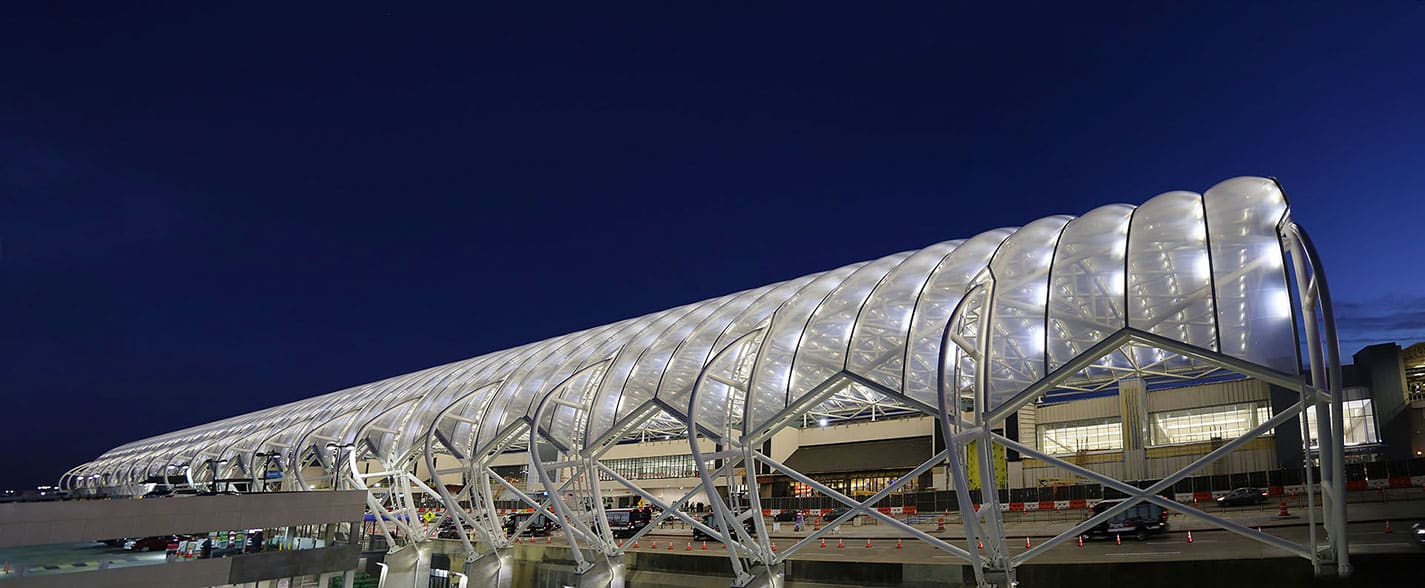
Over the last few years, we have worked on several exceptional tensile structures for airports. Two of the standout projects include the massive ETFE membrane canopies for the ATLNext Central Passenger Terminal Complex at Hartsfield-Jackson Atlanta International Airport and the Canyon at Salt Lake City International Airport. We noticed the J.D. Power rankings for these airports increased after adding our tensile structures. Do tensile structures indeed boost an airport’s J.D. Power rank?
Tensile membrane structures can contribute to a better customer experience at airports, which could indirectly boost their J.D. Power rankings.
Tensile membrane structures can provide several benefits for airport customers, such as shelter from the weather, shade from the sun, and a visually appealing environment. These structures can also be used to create more efficient and organized spaces for airport operations, such as baggage claim areas or check-in counters.
Providing a better customer experience through the use of tensile membrane structures can result in higher levels of satisfaction among airport users, which could translate into higher J.D. Power rankings. However, the J.D. Power rankings are based on a variety of factors, including terminal facilities, airport accessibility, security check, baggage claim, and overall customer service, so the impact of tensile membrane structures on J.D. Power rankings is likely to be relatively small.
It’s important to note that while tensile membrane structures can contribute to a better airport experience, they are only one of many factors that can influence customer satisfaction and J.D. Power rankings. Airport operators should focus on providing a holistic and high-quality experience to their customers in order to achieve higher J.D. Power rankings.





